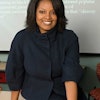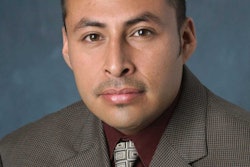The Spanish word "ganas" cannot be defined by written words or loose paraphrases.
It is more than "a wish to do something," as its English translation purports. In fact, "ganas" can only be interpreted through a life that embodies it.
As a high school student in East Los Angeles, Dr. Erika Tatiana Camacho didn't know what ganas looked like. She aspired to only one thing: becoming a store cashier.
"That way I didn't have to clean houses and work so hard like my parents did," says Camacho, the youngest of four children who became angry watching her Mexican-born parents sacrifice wellbeing for menial wages.
Having immigrated to the United States as an 8-year-old, school wasn't easy for Camacho — especially the part about speaking English. For Camacho helping the family survive superseded personal ambitions. She says she watched her older siblings start and stop in school, and it was only a matter of time before she would suffer the same fate.
But things changed, she says, the year she arrived at Garfield High School and into Jaime Escalante's algebra class. Escalante, whom Academy Award nominee Edward James Olmos portrayed in the 1988 film, "Stand and Deliver," was known for raising the achievement of his students, mostly Latino, and preparing them for college.
"He asked me what I wanted to be, and the first time I didn't want to respond because I didn't know being anything was a possibility," Camacho says. "He always said ganas is all you need, the desire and discipline to do it.'"
Camacho quickly went from expressing variables to finding integrals and found herself applying to college. Attending Wellesley College was a hard sell for her close-knit family even with a generous financial aid package. Nevertheless, Camacho pursued dual degrees in economics and mathematics, but the challenges only began for her.




















